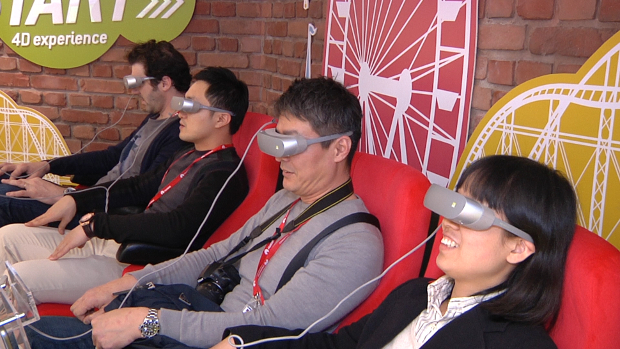Dell wants to prove that you don’t need a high-end GPU in your computer to create content for virtual reality headsets.
Instead, the company wants to move VR content creation into the cloud with new computing products it plans to release. The goal is to add more mobility and security.
Among the new products planned are thin clients that run applications stored in remote servers or appliances. The servers will have GPUs that power VR content creation on virtual desktops.
Virtual reality is an interesting market, and Dell will have products to talk about in the future, said Jeff McNaught, executive director of cloud client computing at Dell.
Some products provide the linchpin to get the effort started, McNaught said. The company on Thursday released the Latitude E7270 Wyse mobile thin client, which has an Intel Skylake chip and an integrated GPU to handle client-side graphics. The company in May also started shipping the Precision Appliance for Wyse, a 2U rack server that can be packed with Nvidia graphics cards to power content creation on thin clients.
As more data moves into the cloud, servers are getting busier processing data. Thin clients are already being used to create engineering applications and animation. It is also possible to deliver VR content over the web with emerging protocols like WebVR, which is under development but has already been integrated into Chrome and Firefox browsers.
Dell’s Wyse supports virtualisation technologies from Microsoft, Citrix, VMware and Teradici. VMware became part of Dell after a recent $67 billion merger with EMC, but the company will support all virtualisation technologies.
VR content creation on thin clients via centralized servers has its benefits, McNaught said. The data is secure on servers. Multiple thin client users can access the files on the servers and collaborate on content creation.
Dell sells mobile and desktop thin clients with Windows, Linux and ThinOS, which is a proprietary Wyse OS. Thin clients are used in offices, airports, hospitals, classrooms, shops, casinos and other locations. Dell has built in local and cloud-based security features into its thin clients.
Dell got into thin clients with the acquisition of Wyse Technology for about $600 million in 2012. It was bought as a way to boost Dell’s client product portfolio and protect the company from a decline in PC sales. Wyse remains the top thin-client company, but companies like HP have competitive products and proprietary protocols. Other competitors include ClearCube and Ncomputing.
Not all of Dell’s thin clients have worked out. A failed product was the Cloud Connect, a thumb-sized PC that could plug into TVs. Originally called Project Ophelia, it had an Android OS and an interface and usage model similar to that of tablets.
Project Ophelia was an interesting idea but the company didn’t sell many of these. Customers wanted more USB ports and video capabilities, McNaught said. Dell has no product similar to Project Ophelia in the pipeline, but is keeping options open.
IDG News Service







Subscribers 0
Fans 0
Followers 0
Followers